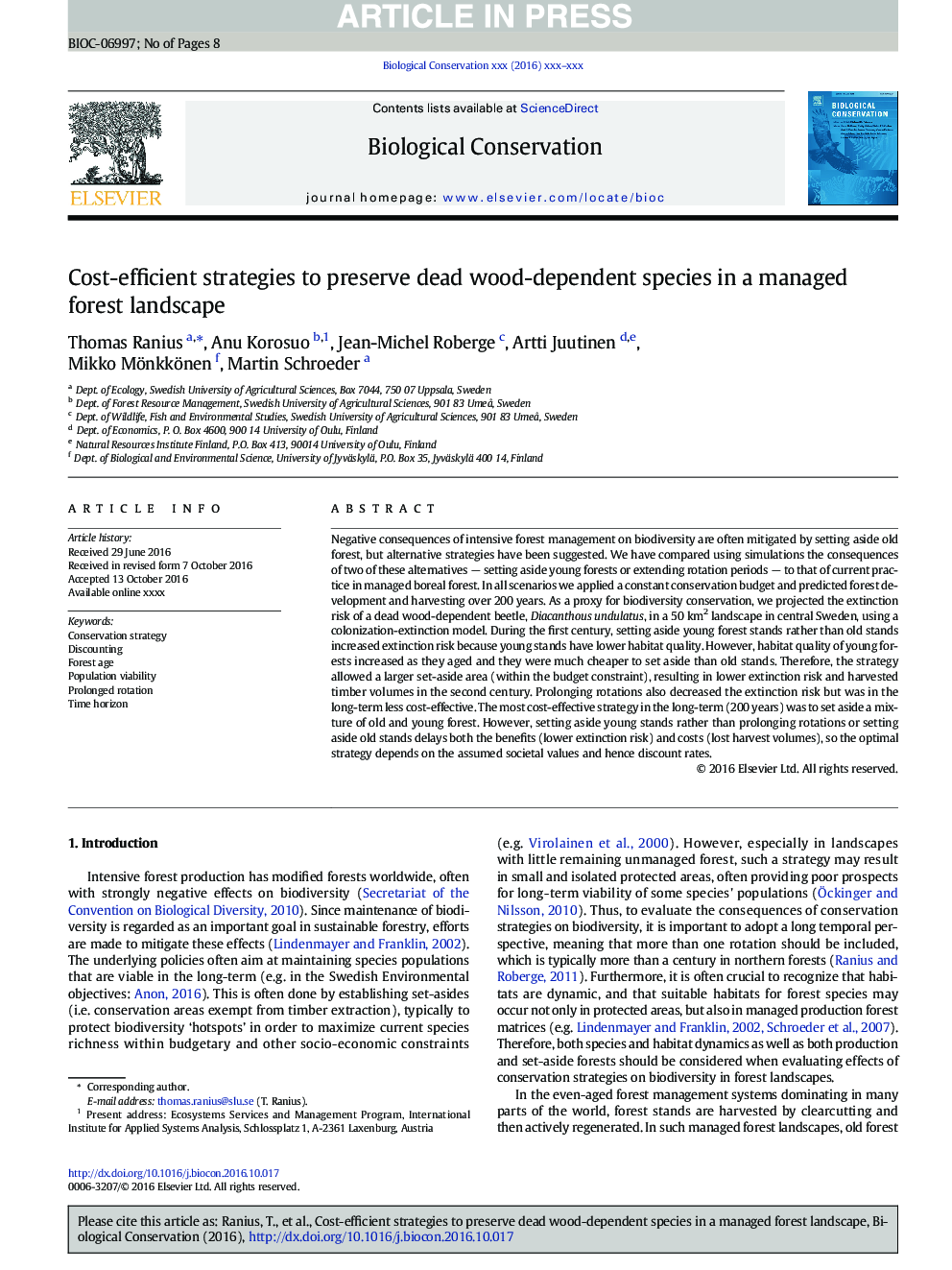| کد مقاله | کد نشریه | سال انتشار | مقاله انگلیسی | نسخه تمام متن |
|---|---|---|---|---|
| 5743394 | 1412305 | 2016 | 8 صفحه PDF | دانلود رایگان |
عنوان انگلیسی مقاله ISI
Cost-efficient strategies to preserve dead wood-dependent species in a managed forest landscape
ترجمه فارسی عنوان
استراتژی های صرفه جویی برای حفظ گونه های وابسته به چوب در چشم انداز جنگل های مدیریت شده
دانلود مقاله + سفارش ترجمه
دانلود مقاله ISI انگلیسی
رایگان برای ایرانیان
کلمات کلیدی
استراتژی حفاظت، تخفیف سن جنگل، زنده ماندن، چرخش طولانی مدت، افق زمانی،
موضوعات مرتبط
علوم زیستی و بیوفناوری
علوم کشاورزی و بیولوژیک
بوم شناسی، تکامل، رفتار و سامانه شناسی
چکیده انگلیسی
Negative consequences of intensive forest management on biodiversity are often mitigated by setting aside old forest, but alternative strategies have been suggested. We have compared using simulations the consequences of two of these alternatives â setting aside young forests or extending rotation periods â to that of current practice in managed boreal forest. In all scenarios we applied a constant conservation budget and predicted forest development and harvesting over 200Â years. As a proxy for biodiversity conservation, we projected the extinction risk of a dead wood-dependent beetle, Diacanthous undulatus, in a 50Â km2 landscape in central Sweden, using a colonization-extinction model. During the first century, setting aside young forest stands rather than old stands increased extinction risk because young stands have lower habitat quality. However, habitat quality of young forests increased as they aged and they were much cheaper to set aside than old stands. Therefore, the strategy allowed a larger set-aside area (within the budget constraint), resulting in lower extinction risk and harvested timber volumes in the second century. Prolonging rotations also decreased the extinction risk but was in the long-term less cost-effective. The most cost-effective strategy in the long-term (200Â years) was to set aside a mixture of old and young forest. However, setting aside young stands rather than prolonging rotations or setting aside old stands delays both the benefits (lower extinction risk) and costs (lost harvest volumes), so the optimal strategy depends on the assumed societal values and hence discount rates.
ناشر
Database: Elsevier - ScienceDirect (ساینس دایرکت)
Journal: Biological Conservation - Volume 204, Part B, December 2016, Pages 197-204
Journal: Biological Conservation - Volume 204, Part B, December 2016, Pages 197-204
نویسندگان
Thomas Ranius, Anu Korosuo, Jean-Michel Roberge, Artti Juutinen, Mikko Mönkkönen, Martin Schroeder,
